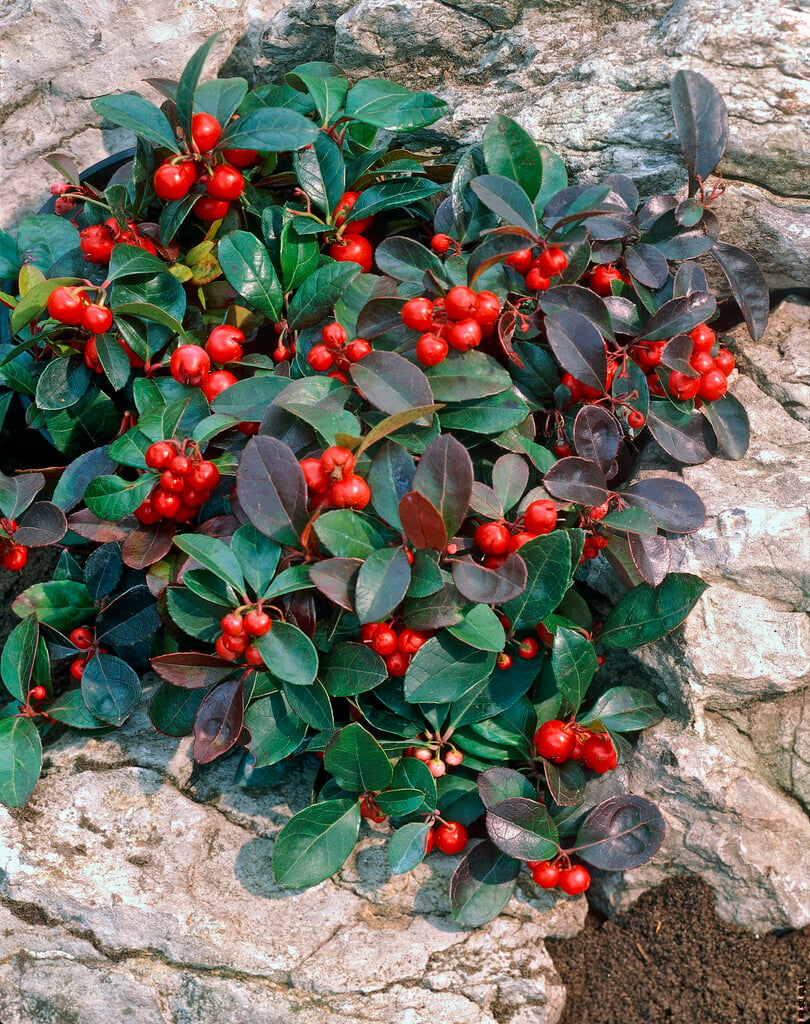Gaultheria procumbens
checkerberry
A dwarf evergreen shrub to 15cm in height, spreading indefinitely, with rounded leathery leaves, aromatic when crushed and turning reddish in winter. Small, bell-shaped white or pinkish flowers are followed by scarlet berries 10mm in width
Other common names
American mountain teaaromatic wintergreen
see moreboxberry
Canada tea
canterberry
chequerberry
chickenberry
chinks
creeping checkerberry
creeping wintergreen
creeping wintergreen checkerberry
drunkards
gingerberry
ground tea
groundberry
grouseberry
one-berry
partridge berry
procalm
red pollom
spiceberry
spicy wintergreen checkerberry
spring wintergreen
tea leaves
teaberry
wintergreen
wintergreen oil plant
youngsters
Size
Ultimate height
0.1–0.5 metresTime to ultimate height
5–10 yearsUltimate spread
0.5–1 metresGrowing conditions
Moisture
Moist but well–drainedpH
Acid, NeutralColour & scent
| Stem | Flower | Foliage | Fruit | |
| Spring | ||||
|---|---|---|---|---|
| Summer | Pink White | Red | ||
| Autumn | Red | |||
| Winter | Red |
Position
- Full shade
- Partial shade
Aspect
North–facing or West–facing or East–facing or South–facing
Exposure
Exposed or Sheltered Hardiness
H5Botanical details
- Family
- Ericaceae
- Native to GB / Ireland
- No
- Foliage
- Evergreen
- Habit
- Suckering
- Potentially harmful
- Fruit are ornamental - not to be eaten. Wear gloves and other protective equipment when handling. Pets: Fruit are ornamental - not to be eaten - see the HTA guide to potentially harmful plants for further information and useful contact numbers
- Genus
Gaultheria are evergreen, often dioecious, shrubs with simple, leathery leaves and small, bell-shaped white or pink flowers, followed by long lasting fleshy fruits in various colours
- Name status
Correct
- Plant range
- E N America
How to grow
Cultivation
Grow in moist soils in shade or partial shade
Propagation
Propagate by seed or semi-hardwood cuttings
Suggested planting locations and garden types
- Cottage and informal garden
- Gravel garden
- Rock garden
- City and courtyard gardens
- Patio and container plants
- Low Maintenance
- Flower borders and beds
- Banks and slopes
Pruning
Pests
Generally pest-free
Diseases
May be susceptible to honey fungus in gardens where it is present but insufficient data to determine degree of susceptibility
Love gardening
Sign up to receive regular gardening tips, inspiration, offers and more
View our Privacy Policy
Get involved
The Royal Horticultural Society is the UK’s leading gardening charity. We aim to enrich everyone’s life through plants, and make the UK a greener and more beautiful place.

